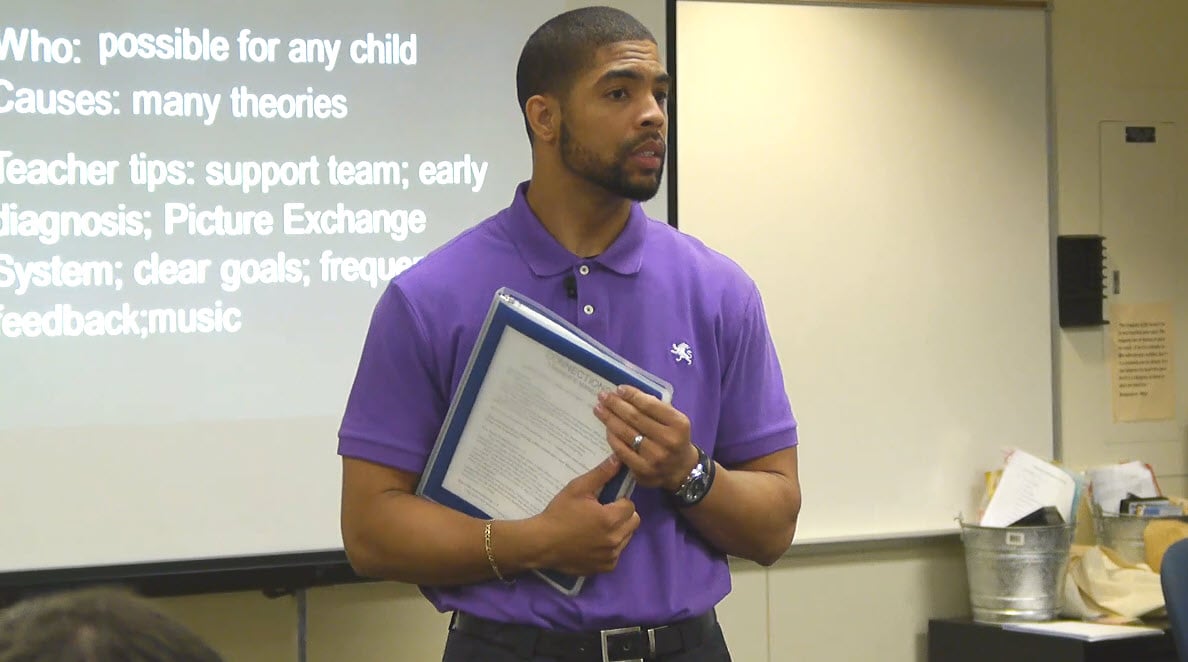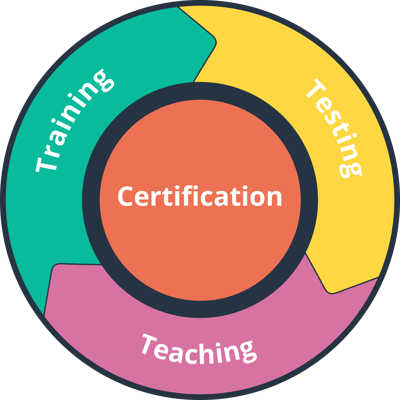



Choosing a credential program is one of the most important decisions of your teaching career. Not only are teaching credential programs a pathway to becoming certified to teach, but they also offer a foundation upon which to build a career.
Choosing the right teacher credential program is important when beginning your journey to becoming a teacher. But with dozens from which to choose, how do you know which one is the right one for you?
Let’s compare some of a program's best and worst qualities so that you can determine which ones to explore and which to avoid.
To earn your teaching credential in Texas, you must earn it from a program approved by the Texas Education Agency (TEA). The TEA is a state agency that oversees public education.
oversees public education.
The best teacher credential programs will be on the TEA’s list of state-approved educator preparation programs. To be on this list, a program must meet the criteria established by the TEA and show that it prepares qualified educators to meet the needs of all learners in the state’s classrooms.
The worst teacher credential programs won’t be on this list. It doesn’t matter how great the program seems. They may do an excellent job in preparing you for working in a classroom. However, if the program is not on the TEA’s list of state-approved educator preparation programs, you can’t get your teaching certificate no matter how hard you worked and how much you learned.
There is an important caveat to keep in mind, however. Just because a teaching credential program is on the state-approved list, it does not mean it’s THE best program. It simply means that program has met the minimum requirements to offer you the training required for a teaching license.
Your journey will not be the same as another teaching intern’s. You will have unique needs and goals, and your schedule will look different.
The best teaching credential programs will create a customized plan just for you. This plan will help you stay on target to achieve your goals.
When inquiring about a program, pay close attention to whether the admissions professional helps you consider all of your options. Admissions should never pressure you into making a commitment to one specific path and should want to ensure the program is a great fit for you (and you’re a great fit for the program).
The worst teaching credential programs will look at you as only a number and will not prioritize creating an individualized approach for your journey. If a program's timeline seems standard and not tailored to your qualifications and goals, there’s a good chance you aren’t speaking with a high-quality program.
Remember that the subject and grade level you want to teach will impact the content exams you must take, the coursework you must complete, and when. A person wanting to teach special education will need to take different content exams than someone who wants to be a social science, music, art or mathematics teacher. An individual who wants to teach in an elementary school will need a different credential from someone who wants to teach at the middle school or high school levels.
Your goals may include earning a single subject teaching credential, while another candidate may have the goal of earning a multiple subject teaching credential.
Your education and experience before enrolling in an alternative teacher certification program may also impact what exams you must take. How you perform on these exams will impact when you should begin your student teaching as well.
As you can see, not everyone’s journey will be the same. Therefore, your timeline should not look the same as everyone else’s.
In Texas, you must be assigned an in-field adviser as you complete your teacher preparation program. However, there are no requirements on how experienced or even how good of an advisor you must have during this important step toward certification.
The best teaching credential programs will assign you with an experienced adviser who will watch your back and guide you through your first year as a teacher. These advisers should be accessible to you throughout the school year and make periodic classroom visits in the school districts where you are completing your student teaching to observe your teaching in order to provide helpful feedback.
Look for a program that actively promotes its advisers and their credentials on the program’s website. Check whether these advisers are former or current teachers, principals, vice principals, etc.
The worst teaching credential programs will assign you to an in-field adviser with limited experiences, such as students who have recently graduated from the same certification program.
We can’t stress the importance of being partnered with an experienced adviser. Of the 300 hours of training you must take to receive a standard teaching certificate in Texas, 30 must be dedicated to observation by a teacher advisor. These 30 hours are a very important part of your certification process. Certified teachers will send a recommendation to your program whether you are ready or not ready to teach in the classroom.
The path toward certification include three components:
The best teaching credential programs will have interns work on these three components at the same time using a full-circle approach.
What does a full-circle approach look like? Think of each component as its own open ring. While some training must be completed before testing and student teaching, other parts of your training can be completed while in the classroom as a teacher of record. A full-circle approach allows you to close each ring simultaneously rather than one at a time.
The worst teaching credential programs don’t allow you to complete your different teaching credential requirements more than one at a time. This is incredibly inefficient and can prolong your path toward certification.

The certification process requires the completion of several exams along the way, from your content exams to the PPR, or the Texas Examinations of Educator Standards Pedagogy and Professional Responsibilities (though this latter test may be changing in the future, as we discuss in our article, EdTPA Rejected: Get Teachig License Now Before More Barriers To Up.)
The best teaching credential programs will offer test preparation as part of your training.
The worst teaching credential programs will offer test preparation help as add-on costs. This is a clue that the program you are considering does not have your best interest in mind and is simply looking for ways to nickel and dime you.
Finally, the teacher education program you are looking at may offer courses online or in-person. Each has its own advantages.
Online teaching credential programs are often flexible, allowing you take courses around your schedule. This is helpful if you are employed, are a parent or have other time-consuming obligations. Online programs also often have a high level of course availability since you can sign up for any class offered anywhere in the state.
In-person training offers you more opportunities for developing professional relationships, teamwork and collaboration, and hands-on training that you can’t get solely through online training. You can also take advantage of the greater availability of instructors who are more likely to answer your questions promptly, as well as networking moments that happen spontaneously or through planned events.
The best teaching credential programs offer a combination of both online and in-person training, providing you with the best of both worlds.
The worst teaching credential programs don’t meet your individual needs, whether that’s flexibility in your coursework or hands-on training that better prepares you for your time in the classroom. They also aren’t up front with you about the advantages and disadvantages you may face by choosing an online or in-person program.
You may find that programs that are solely online or solely in-person are better for you, and that’s OK. However, a program that offers both online and in-person opportunities for training provides more advantages overall and can offer a more solid foundation as you begin this important journey.
Topics: Becoming A Teacher
Micah is the Director of Curriculum & Technology. He holds a Bachelor of Arts in British Literature, from the University of North Texas and a Master of Arts in Teaching, from Louisiana College. In his previous career, Micah served for 14 years as a banker and bank manager. For the majority of this period, Micah managed the Downtown Fort Worth location of Frost Bank. In 2005, Micah finally surrendered to his true calling to be an educator. After a brief, but fulfilling term teaching high school English at Flower Mound High School in Lewisville ISD, Micah went to work for the family business, training teachers.
7166 Baker Blvd., Suite B · Richland Hills, Texas 76118
Phone 817-284-7731 | Fax 817-284-3396
Login | Make Payment | ECAP Handbook | Privacy Policy | Pricing
YOUR COMMENTS